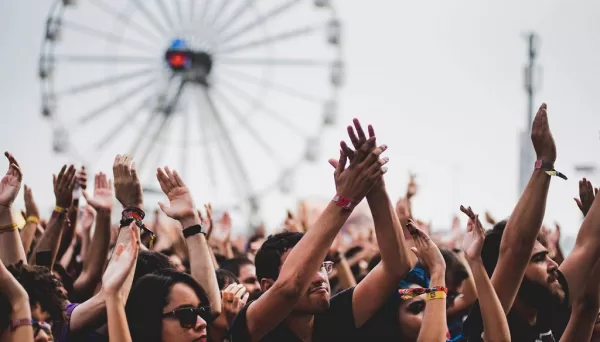Known as a cultural district of Rio de Janeiro and home of the Carioca bohemia, Lapa is a historic neighborhood located in the central region of the city that brings together different attractions for all tastes and pockets.
In addition to the vibrant nightlife with lively bars and pubs, concert houses, trendy nightclubs and street parties that last all night, the region also offers exciting attractions to get to know during the day.
Check below our list of things to see and do in Lapa, one of Rio’s most bohemian and traditional neighborhoods.
1. Admire the Lapa Arches
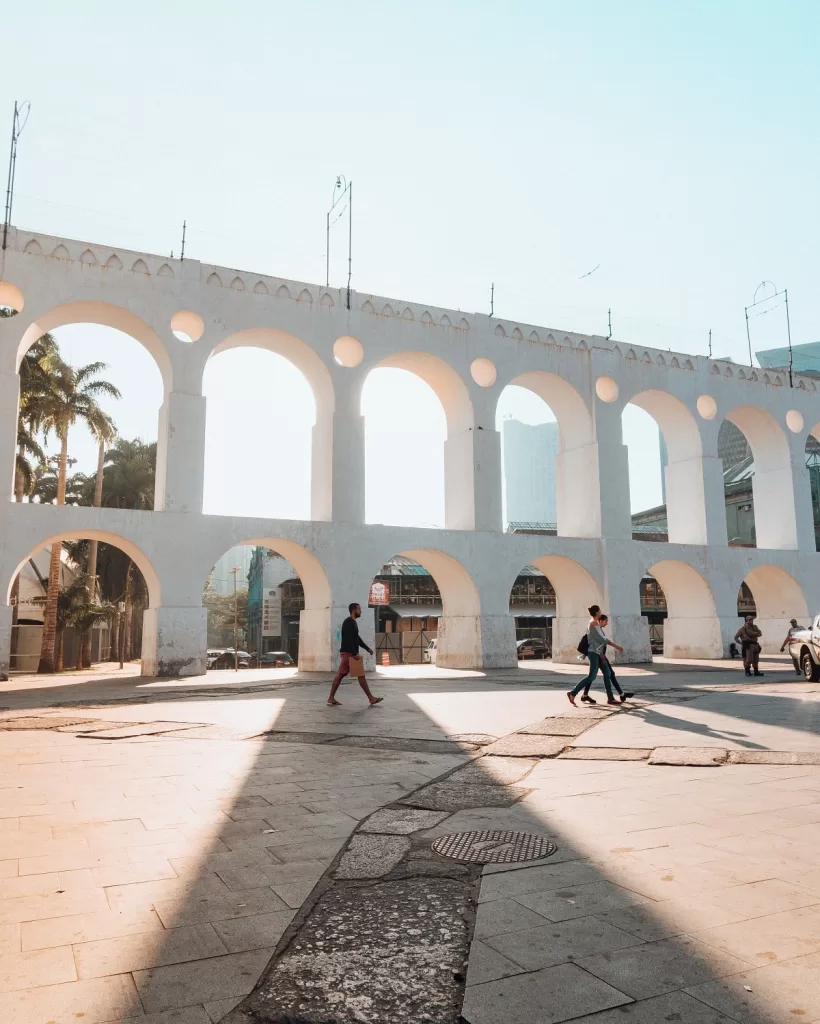
One of main tourist attraction of the district and the city, the Carioca Aqueduct (better known as Arcos da Lapa) was built in 1723 by then-governor Ayres Saldanha to solve the lack of water supply in the city at the time. In 1896, once it became obsolete and was deactivated, the old aqueduct started to serve as a viaduct for the access of trams to the neighborhood of Santa Teresa and thus remains until today.
The structure in Romanesque style is 17.6m high and 270m long with 42 arches and is considered the most important work of colonial Rio de Janeiro.
Today, it also serves as the gateway to the neighborhood and its bustling nightlife. In the square where it is located (Praça Cardeal Câmara, s / n), there is a free street party every night, with stalls selling drinks and street foods (which we Cariocas call “podrão”) and music until the sunrise.
2. Visit the Metropolitan Cathedral
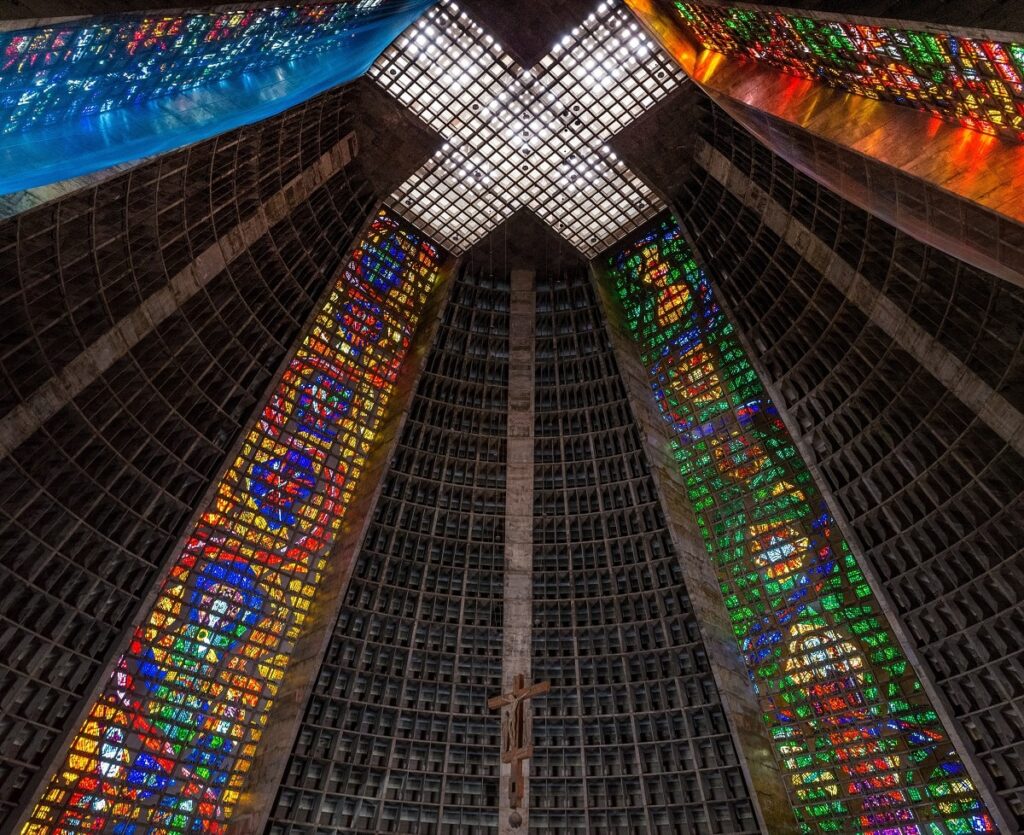
From the arches of Lapa, you can see a cement structure in a conical shape, which draws the attention of those who pass by. The building is the Cathedral of São Sebastião do Rio de Janeiro, also known as Metropolitan Cathedral of Rio de Janeiro.
The cathedral built in a modern style was inaugurated in 1979 and has 75 meters of external height with capacity for 20,000 people standing.
In its interior, it receives the visitors with a cross of 750 kilos and 6 meters of height, that is supported by six cables of steel hovering above the high altar. Its four stained glass lines are facing the cardinal points forming a cross, noted by those who enter the church and look up.
In addition, it is also possible to visit in its underfloor the Archdiocesan Museum of Sacred Art of Rio de Janeiro. In its collection are pieces that record the presence of the Roman Catholic Church in Brazil, as well as part of the history of the city itself, from the colonial period to the Republic.
Archdiocesan Museum of Sacred Art of Rio de Janeiro – Address: Av. Chile, 245. Opening hours: From Tuesday to Friday, from 9 a.m. to 16 p.m. Saturdays and Sundays from 9 a.m. to 12:00 p.m.
3. Watch a Samba Circle live
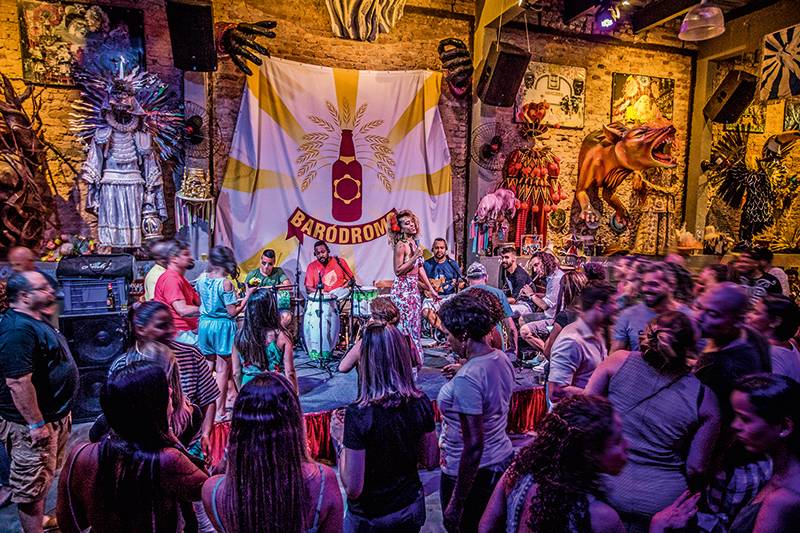
The samba circles (samba shows where the musicians sing and play the instruments sitting around a table, forming a circle) are a Carioca cultural tradition. Lapa, with all certainty, is the main place for those who want to know, listen, and dance to the most Brazilian rhythm of all.
The neighborhood has several houses that offer nightly live samba shows with groups and musicians Cariocas of the musical scene of the city and the country. We highlight two main options in the neighborhood: the Baródromo bar and the Carioca da Gema.
The Baródromo (R. do Lavradio, 163) is a themed bar known as “the house of Carioca Carnival.”. Its name comes from the junction of the words bar + sambódromo, place of the samba schools official parade. The establishment is entirely decorated with references of Carioca Carnival – allegories, costumes and photos of the historical parades complete the Sapucaí atmosphere of the bar.
The Carioca da Gema (Av. Mem de Sá, 79) is a small bar in the heart of Lapa, considered one of the most traditional samba houses in the city. Its schedule often includes famous musicians of the genre. In fact, its entrance is very concurred due to the small size of the old house converted into a bar.
–> See Where to enjoy samba from Monday to Sunday in Rio de Janeiro.
–> Read more about Carioca Carnival in the post: Practical Guide to enjoy Rio de Janeiro Carnival.
4. Take lots of photos in the Selarón Steps
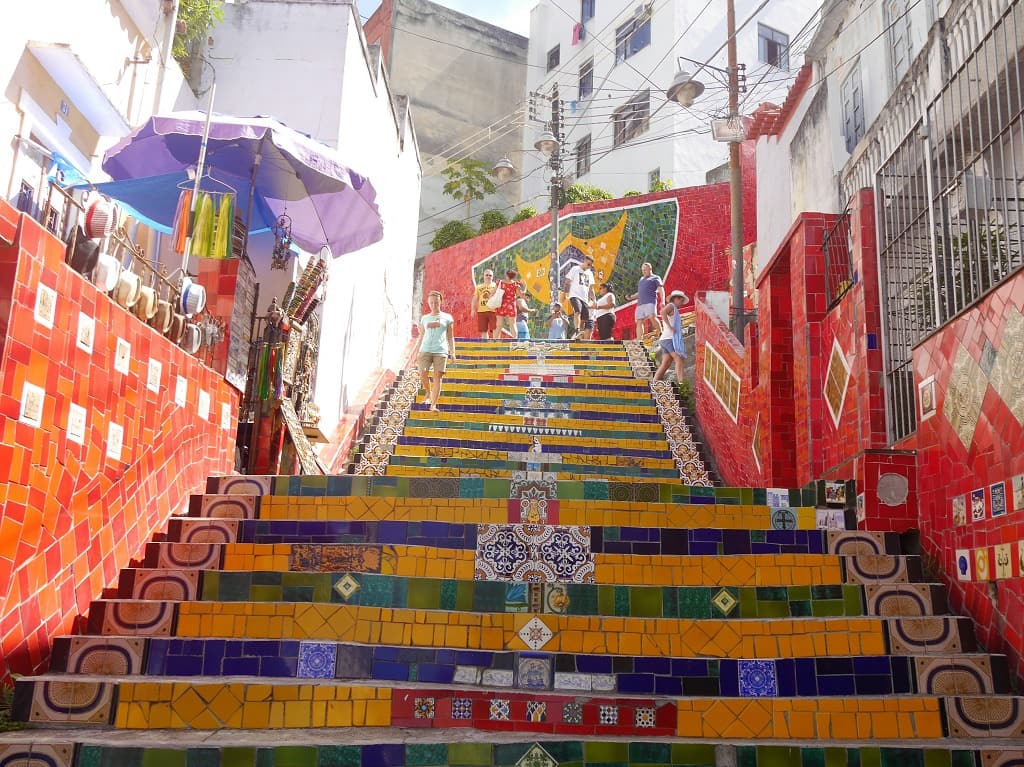
The colorful steps of the staircase Selarón that connects the neighborhood of Lapa to Santa Teresa have already become one of the most famous attractions of the city and is only 5-minute walk distance from the Lapa Arches.
The work was carried out by the Chilean artist based in Brazil, Jorge Selarón, who declared it as a “tribute to the Brazilian people.”.
Its 215 colored steps are covered by more than two thousand tiles. Most were donated to Selarón by visitors from more than 60 countries around the world.
The staircase also became famous after being set for music clips by artists such as the Irish band U2 (“Walk On”) and rappers Snoop Dogg and Pharell (“Beautiful”).
Address: R. Joaquim Silva, S / N

Carioca Tip:
The place is always crowded with tourists trying to get the best photo, which makes the desired picture sitting on the stairs, often a difficult task. Therefore, we recommend visiting the staircase early in the morning or late in the afternoon, when there are fewer visitors.
5. Eat a 'Filé a Oswaldo Aranha' at Cosmopolita Restaurant
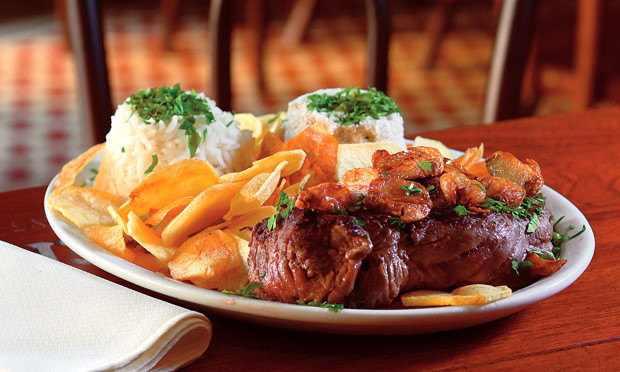
Filé a Oswaldo Aranha is a typical Carioca dish created between the 1930s and 1940s in the Cosmopolita restaurant in Lapa.
The dish consists of a piece of filet mignon or sirloin steak seasoned with fried garlic, accompanied by Portuguese potatoes, white rice, and egg farofa. The above was created in honor of the Brazilian diplomat Oswaldo Aranha, who was a regular customer at the restaurant.
At that time, the restaurant was known as “Senadinho” because it was a meeting point for deputies and senators of the time. The politician, who loved eating meat, daily asked for the combination, which as a result not only gained its name but became a classic of the City.
The restaurant, open until today, is located near the Lapa Arches and the Selarón steps, and worth the visit for a meal.
Address: Travessa do Mosqueira, 04.
6. Shopping (and bargain) at the Lavradio market
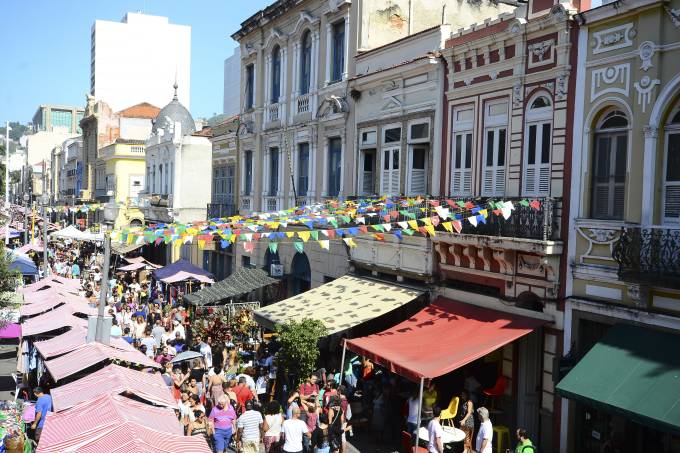
Every first Saturday of the month, one of the most traditional open market in Rio, the Lavradio Fair, also known as the Rio Antigo Fair, takes place on Rua do Lavradio.
The hundred-year-old street that houses historic mansions, antique shops, bars, and restaurants is taken end-to-end by stalls that offer different products: from clothes to accessories, from furniture to objects of decoration. Leaving empty-handed is an almost impossible task!
In addition to the stalls that take the street from 10 a.m. to 7 p.m., musical performances, and independent dance shows take place throughout the day.

Carioca Tip:
You can combine shopping with a typical Brazilian meal or drink in one of the bars and restaurants on the street. The establishments usually offer live music shows, and many also have a balcony with a privileged view of the market.
7. Enjoy Lapa Nightlife
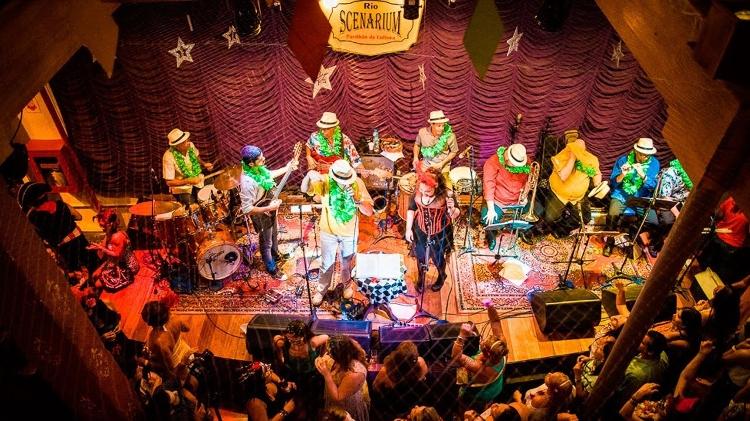
Not only from samba is made the district, but of all musical rhythms, after all, Lapa is the most democratic neighborhood in Rio!
The two main nightclubs in the area for those who want to enjoy music and dance until the sun rises are the Rio Scenarium and the Leviano bar.
The Rio Scenarium (Rua Lavradio, 20) operates as a concert hall with live music, bar, and restaurant. The 19th-century mansion has an extensive collection of furniture and old objects, which decorate the house. With authentically Brazilian music programming, it features live shows and an attached room with DJ’s playing Brazilian popular music for dancing. Click here to check its schedule.
Another good option that offers musical programming for all tastes from Monday to Sunday is the Leviano Bar (Av. Mem de Sá, 47). The concert house and bar is very close to the Lapa Arches, at the entrance of the neighborhood. Check out their schedule here.
–> If you enjoy nightlife, it may be a good option to stay in the Lapa neighborhood. Check out some options by clicking here.
8. Drink cachaça in the Cachaça Bar
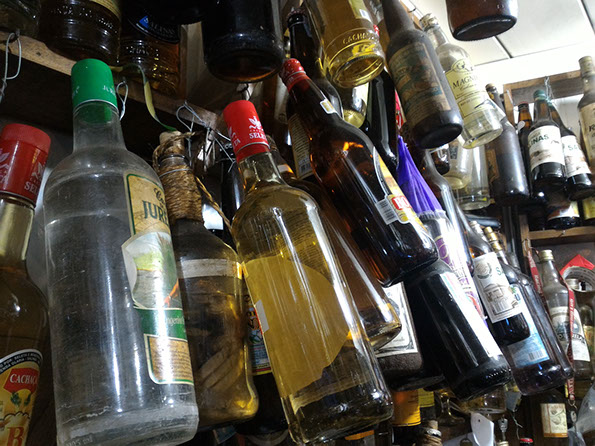
Located where, in the past was the Largo do Bonde (the final point of the city’s transportation trams) is the first cachaçaria of the town, Lapa House of Cachaça.
Open since 1960, the house was the first house to be dedicated to the typical Brazilian product – the cachaça, a distilled beverage made from sugarcane. With a menu of more than 200 labels, the bar has rare and unusual flavors. Some of the main ones are, for example, Havana, pistachio, ginger, jurupinga (grape cachaça) and the famous Gabriela with clove, cinnamon and cane syrup.
The place is also the meeting point of the young people of Lapa to take the ‘saideira’ (last round) and chat until dawn. It’s worth the visit to taste one of the bar’s labels.
Casa da Cachaça – Address: Av. Mem de Sá, 110.
–> Cachaça is the primary raw material for Brazil’s most famous drink, Caipirinha. Try it! After all, it is one of the 10 unmissable things to do in Rio.
9. Go to a concert at Circo Voador
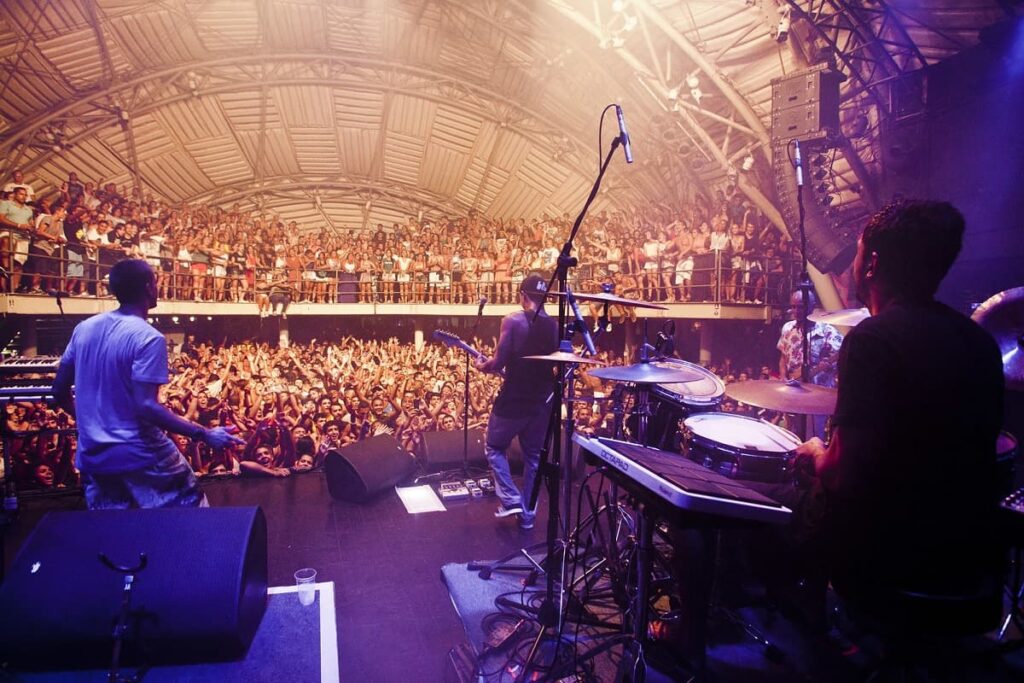
Circo Voador is a traditional concert hall and cultural space in Rio. Located behind the Lapa Arches, it is considered one of the most respected live music house in Brazil.
Rio’s most democratic and diversified stage, the “nave” (as it is known locally) was responsible for historical nights in the music scene of Rio de Janeiro. To the present day, it receives national and international attractions of great name, being a meeting point of all tribes and rhythms.
Besides concerts, the place also offers an extensive program of festivals and cultural events. Follow the schedule of the house here.
Circo Voador – Address: R. dos Arcos, s / n.
10. Dance Forró in the Democrático Club
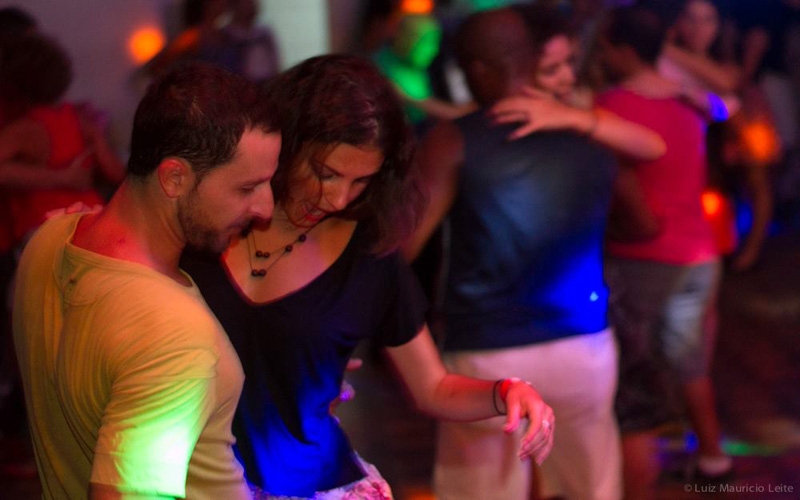
Founded in 1867, the club was once the site of great Carnival parties of the Carioca society at the end of the 20th century. The club was founded in 1867 and is known as the “traditional house of Carioca Carnival society” (Rua Riachuelo, 91).
Currently, the club has a diverse schedule (check here) being Wednesday night the most traditional of the club, the democratic Wednesday. It is the day with live shows of bands playing forró, a traditional musical rhythm of the Northeastern Region of Brazil. The dance of forró that accompanies the songs of the genre is known as
“xote” dance where the couple dance together in what we call, “one-two, one-two.”
If you like to dance and meet people, go check this historic house and let yourself be carried away by the contagious pace of forró music.
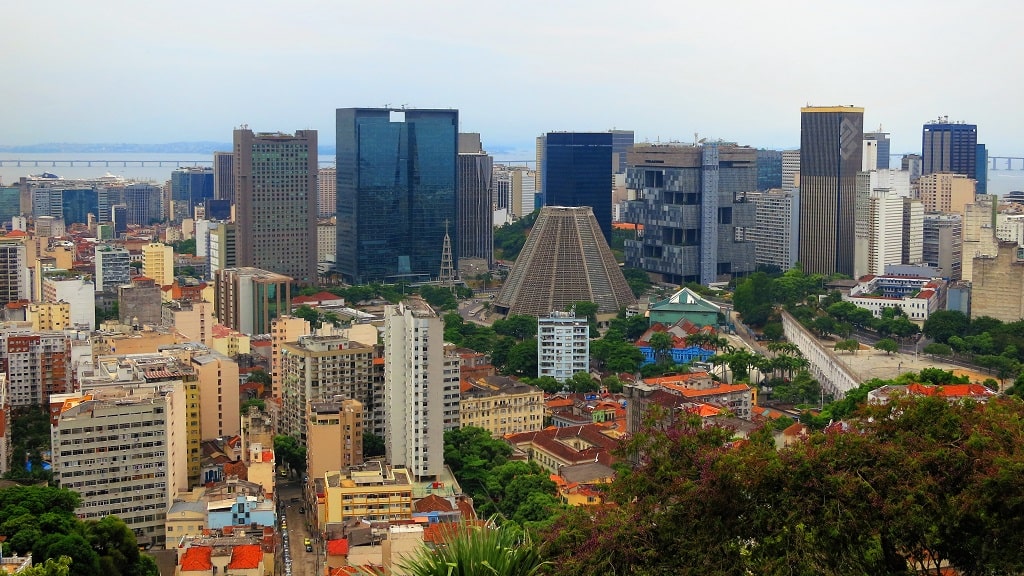
We hope you have enjoyed our tips and that they will help you to get to know this historic district of Rio. After all, it is a must-visit on your trip to Rio de Janeiro!
If you want to visit Rio de Janeiro as a true Carioca, knowing places that only locals know and enjoy everything that the city has to offer besides the traditional sights, contact us and we will make a custom itinerary for your trip to the Marvelous City!
